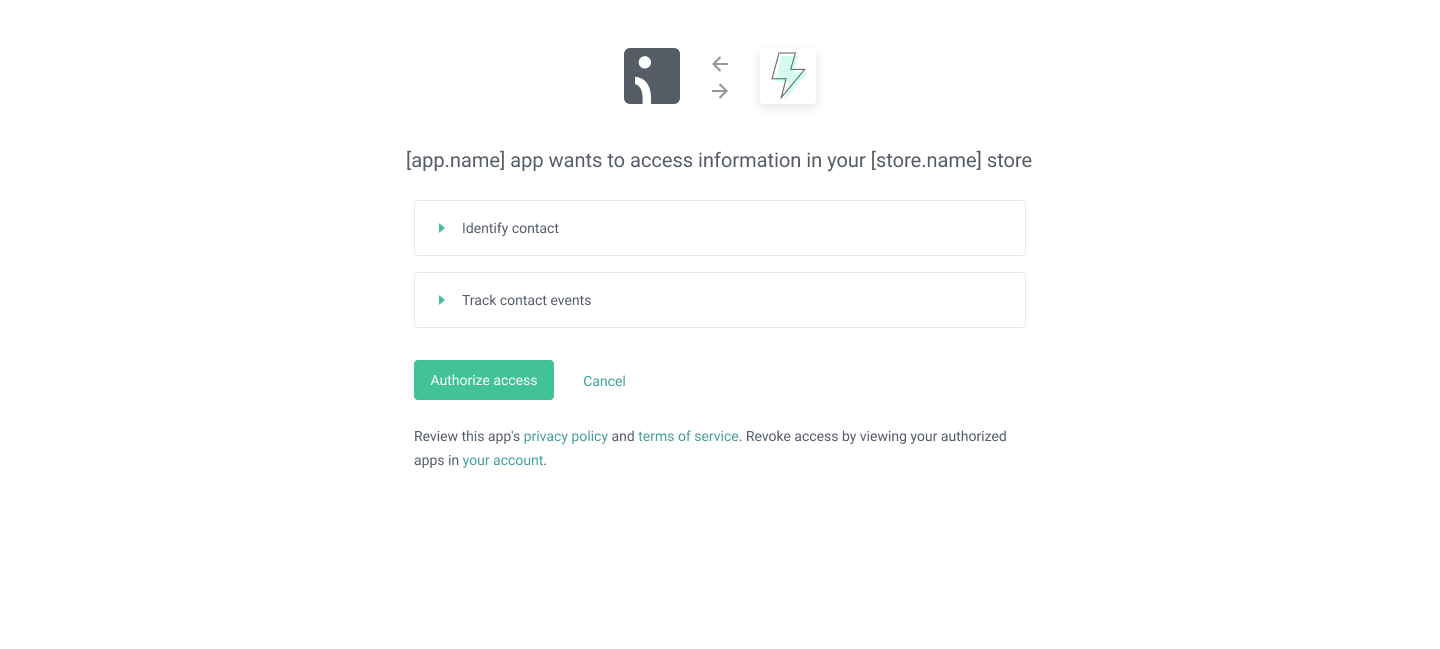Currently, we do support the OAuth Authorization Code Grant flow standard in v5 endpoints.
If you would like to use it please fill in the following form https://forms.gle/axz6ychcELUuPrR28 and we will get back to you with oAuth credentials in 1-3 business days.
Usage
1. Generating an auth request
| Query parameter | Description |
|---|---|
response_type | Authorization code grant type. Always pass code. |
client_id | Your OAuth client id. |
redirect_uri | URL where user will be redirected with generated auth code. |
scopes | The resources your app is willing to access. Values separated by spaces. They are defined for each endpoint in our API documentation. |
state | Randomly generated, unique per request value used by your app to maintain state between request and callback. More info: "state" Parameter. |
E.g.:
GET https://app.omnisend.com/oauth2/authorize?client_id=YOUR_CLIENT_ID
&redirect_uri=REDIRECT_URI
&response_type=code
&state=RANDOMLY_GENERATED_VALUE
&scope=RESOURCEX%20RESOURCEYIf a user is not logged in, she/he will be redirected to do that. After logging in, the consent page will be shown.

Here the user will need to approve for the app to access particular resources on behalf of her/him. Continuing the flow brings the user to the next step.
2. Accepting user authorization
Do you remember the Authorization callback URL specified during app submission? The user will now be redirected to that URL, and you are responsible for taking care of the auth code provided in the query parameters.
E.g., of the callback:
http://localhost:6000/?code=6O-KEB2KNCWKT7YVFYTF9G&state=adxcsasdcqwsYou must parse the code and proceed to the next step.
3. Getting an access token
With the code from the previous step you need to generate a POST request to exchange the code to an access token.
| Body parameters | Description |
|---|---|
code | The code parsed from the URL |
grant_type | Always must be authorization_code |
client_id | Your OAuth client id |
client_secret | Your OAuth client secret |
redirect_uri | Same redirect URI used in the step 2 |
E.g.:
POST https://app.omnisend.com/oauth2/token
Content-Type: application/x-www-form-urlencoded
client_id=YOUR_CLIENT_ID
&client_secret=YOUR_CLIENT_SECRET
&grant_type=authorization_code
&code=AUTH_CODE
&redirect_uri=REDIRECT_URIYou will get a similar response:
{
"access_token": "RANDOMLY_GENERATED_ACCESS_TOKEN",
"expires_in": 9223372036,
"refresh_token": "RANDOMLY_GENERATED_REFRESH_TOKEN",
"scope": "RESOURCEX RESOURCEY",
"token_type": "Bearer"
}That's it! You now have an access token for requested resources for the particular user. Keep it as long as you need, because it will never expire (unless the user decides to revoke it).
Making a request to the API
With an access token you can start calling our API and interact with resources (such as Contacts, Events, etc).
Here is a sample request to get a contact by provided email:
GET https://api.omnisend.com/v5/events
Content-Type: application/json
Authorization: Bearer RANDOMLY_GENERATED_ACCESS_TOKENP.S. If you have any feedback, or you are missing some important information, please contact us via [email protected].